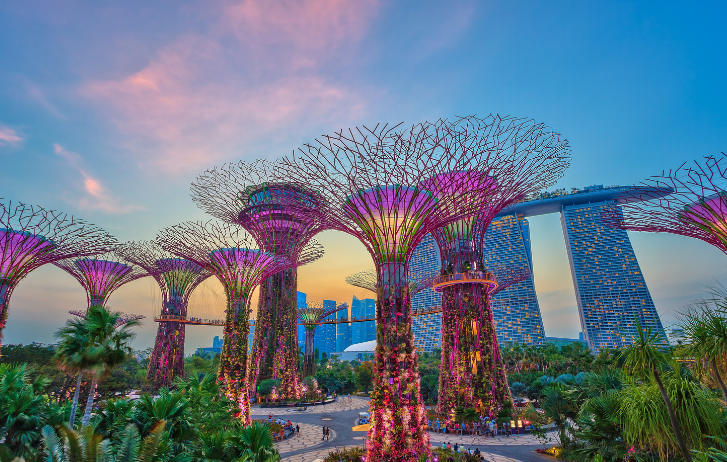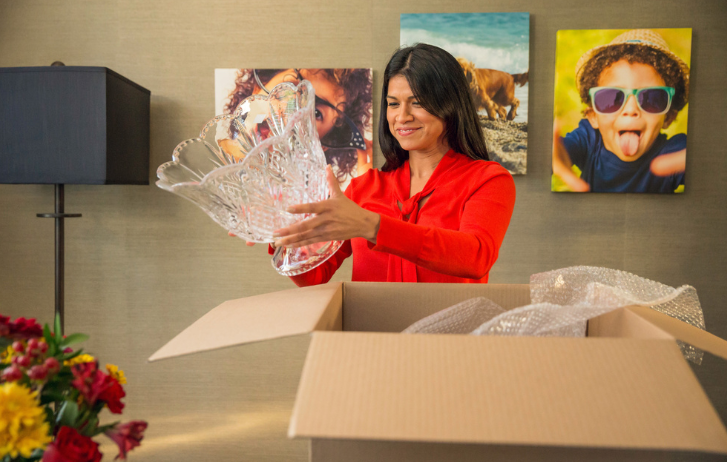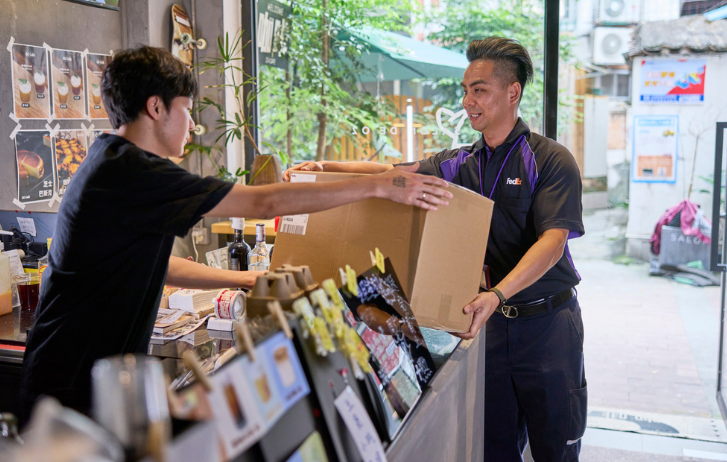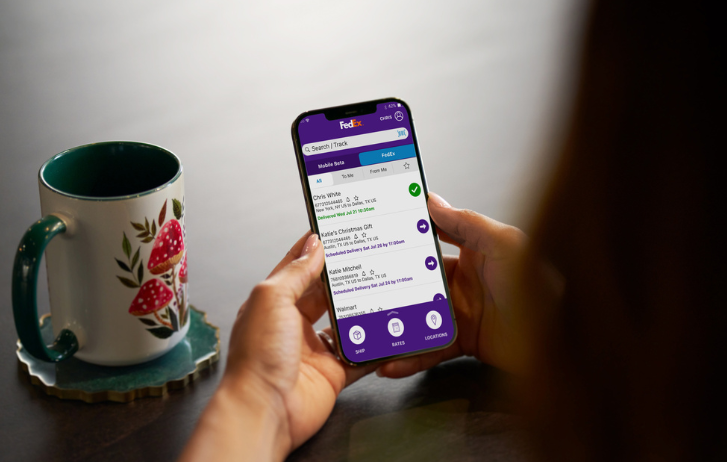
How Connected Commerce Is Shaping Singapore’s Luxury Market
By Kawal Preet | March 27, 2025
Smart logistics can help luxury brands build buyer trust for high-value goods. Kawal Preet explores how the luxury goods market in Singapore is evolving alongside new consumer trends.
- The Singapore luxury market is booming, but many high-spending consumers have moved beyond traditional displays of wealth.
- With trends like quiet luxury, cross-border proxy spending and second-hand luxury goods on the rise, Singaporean shoppers are investing in new kinds of shopping and spending.
- Kawal Preet explores which luxury trends are here to stay, and what’s shaping Singapore’s luxury goods market in 2025 and beyond.
Did you know that Singapore is the most expensive city in the world for luxury goods spending? The story of Singapore’s economic growth is a fascinating one. A former British colony with very little land and natural resources, Singapore became an independent city-state in 1965.
Since then, the nation has transformed into a financial and manufacturing hub, becoming one of Asia’s major business economies, with open trade policies and low tariffs to encourage growth and development.
Singapore has the second-highest concentration of millionaires in the world. So, what do Singaporeans do with all this wealth? Enter the world of luxury.
The evolution of Singapore’s luxury market
I first moved to Singapore in 1997. When I left in 2006, Singapore, like much of Asia, was shaking off the economic legacy of the SARS crisis and looking firmly ahead.
Luxury retail meccas like Jewel Changi Airport and Marina Bay Sands didn’t exist. Singapore had yet to attract overseas visitors for its first glitzy Formula 1 race. And the global economic recession was still some years away.
Coming back in 2024 – a full six years after the “Crazy Rich Asians” movie catapulted Singapore into the global spotlight – it’s now much easier to spot the hallmarks of a major wealth capital.
Like other Asian metropolises, Singapore has benefitted from the global economic shift of gravity towards the East in recent decades. There’s no disputing this is now a premier luxury vacation destination, with flagship stores and high-end hotels rivaling those in Paris and New York.
But it’s not just the shape of the skyline that’s transformed. Singapore’s luxury market has settled into a new rhythm. A rhythm that reflects resilience and rebound; a more discreet, understated kind of wealth-signaling that’s being termed ‘quiet luxury’.
While sectors like fine jewelry, handbags and designer footwear are thriving, others, like high-end watches and luxury cars, have seen a slowdown. Many of today’s luxury consumers are moving away from overt displays of wealth.
‘Quality over quantity’ reflects a sharpened focus on heritage, craftsmanship and authenticity in place of bold logos. Customization, product longevity and storytelling are now key – and brands and businesses are taking note.
Cross-border e-commerce trends are shaping consumer spending
In Singapore, there’s a growing interest in ‘under-the-radar’ luxury buys for the home, such as art, interior furnishings, and wine collections. At FedEx, we’re seeing high-value imports like these across an increasingly affluent segment in Southeast Asia, typically from Europe or the US.
Today’s luxury consumers are choosing to spend on unique vintage pieces and heirloom purchases. A recent Euromonitor report on consumer lifestyles in Singapore suggests that this shift is driven by a deeper focus on value.
Another factor is rising living costs, which have made both affluent and everyday shoppers more discerning. Value is being measured differently, whether it’s in indigenous craftsmanship, a captivating origin story, or the sustainability of materials.
This has fueled a growing interest in second-hand luxury, as shoppers flock to thrift stores and platforms like Vestiaire Collective, Huntstreet, Luxury Preloved SG, and The RealReal. The second-hand luxury market is booming, set to reach US$51.77 billion by 2026. And in Singapore, the trend for pre-owned luxury fashion has sparked a re-sell economy of its own.
Traditionally, luxury labels like Chanel, Louis Vuitton and Hermes were imported from Europe, shoppable only in malls or direct from brand websites here in Singapore. Now, you can now shop straight from private collections, with a buzzing grassroots export economy in full flow.
Driven by e-commerce, Singaporean solopreneurs and small businesses are popping up to sell and ship pre-loved items to overseas buyers. We see that flow of goods every day at FedEx, with high-value, cross-border single shipments moving between markets. The online buyer-seller economy is thriving, and it’s our job to support the local SMEs that contribute to Singapore’s economy.
At the luxury end, we’re also seeing a trend of cross-border proxy buying in e-commerce. It’s all about access to goods that might be available in one market, but not in another.
The relationship between high-value goods and the delivery experience
Trust is becoming a critical currency in luxury, with 56% of consumers in Asia Pacific saying they’ll quit brands they do not trust. At the highest end, trust translates to cultivating personal relationships with designers, ateliers and tastemakers across fashion, art, and hospitality.
On a more practical level, trust also extends to the delivery experience. Luxury requires precision and a different way of moving goods.
With high-end goods, both buyer and seller need reassurance that their package will be delivered under perfect conditions – and this includes knowing the precise minute of arrival.
We call this smart logistics: high-performance, near-real-time analytics and package data that allow us to track a parcel’s journey, and map contingencies while on the move.
This evolving mindset is reshaping the entire luxury ecosystem, not just in Singapore, but also elsewhere in Asia Pacific. I see similar trends playing out with consumers in Hong Kong, South Korea, and Thailand. Even China – long known for conspicuous consumption – is changing.
Inbound tourism is also driving growth for international luxury brands with a major footprint in Singapore, particularly from Chinese and Indian visitors taking advantage of visa-free travel and transit facilities.
As Singapore’s luxury market continues to evolve, one trend stands out: consumers are redefining what luxury means. It’s not about excess or status. It’s all about connection, quality, and values that resonate.
Shoppers today crave experiences that go beyond the material, seeking hard-to-get, meaningful interactions with brands they champion.
Looking ahead to 2026, we can expect luxury to become even more immersive and thoughtful, as brands offer increased personalization and one-off experiences to meet these intrinsic desires.
Right now, Singapore’s luxury sector is undergoing an exciting transformation – one that’s as discerning and intentional as the consumers it serves. And of course, social media has made luxury more accessible and interactive.
Social platforms like Instagram, Red, and TikTok demonstrate that it’s now content creators, not brands or fashion media, who are creating the conversation and driving consumer behavior and trends in Singapore and Southeast Asia.
From online re-sellers to luxury concierges and influencers, a progressive new wave of businesses has emerged to service the luxury market. As more luxury goods move between borders, we’ll take a closer look at how purchase trends play out.
It’s a fast-moving sector, with many trends and influences at play. I’m excited to see how the evolution of technology continues to upgrade the delivery and customer experience for luxury consumers in Singapore and Asia.
SHARE THIS STORY
- How To Ship A Giant Panda
- How To Make Freight Shipments Work For Your Small Business
- The Rise Of Intra-Asia Trade: Opportunities In The China-Southeast Asia Corridor
- Southeast Asia's Role In Global Manufacturing Supply Chains
- 8 Most Unusual Shipments In The History Of FedEx
- Where Do Old Planes Go When They Retire?
Sign up now and save on your shipping rates!
Sign up now and earn discounts by shipping instantly with FedEx Ship ManagerTM at fedex.com.
Recommended For You

How A Filipino SME Conquered The Global Luxury Packaging Scene
Filipina-led company Consummare are responsible for decadent, custom-designed boxes that house some of the world’s most prominent luxury brands.
Read More
How To Keep Your High-Value Shipments Safe And Secure
Here’s how your business can prevent costly damage and ensure safe, on-time delivery.
Read More
Beyond Boutiques: Can E-Commerce Elevate Your Luxury Brand?
In luxury retail, maintaining a sense of exclusivity and prestige through the e-commerce experience is no small feat. Here’s how to do it right.
Read More




